ESRI Files
Type of resources
Topics
Keywords
Contact for the resource
Provided by
Years
Formats
Representation types
Update frequencies
Scale
-
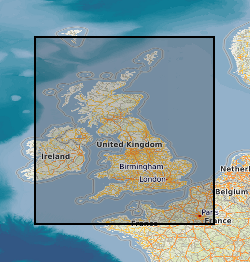
The Quaternary deposits summary lithologies dataset is a digital geological map across the bulk of the UK Continental Shelf (UKCS), for areas up to a water depth of 200 m, which groups the deposits into classes based on similar engineering geology characteristics. The map is derived from (unpublished) BGS 1:1,000,000 scale Quaternary digital geological mapping, so is effective at that scale. The map was produced in 2014 in collaboration with, and co-funded by, The Crown Estate as part of a wider commissioned project to assess seabed geological constraints on engineering infrastructure across the UKCS. The divisions on the map combine the Quaternary deposits into 7 categories of similar strength and lithological variability, each with a ‘Category’ title that summarises their main lithological character: diamict; firm to hard interbedded (layered); firm to hard mud; sand and gravel; soft interbedded; soft mud; undifferentiated. These categories can be used as a basis for assessing, in conjunction with a range of other geological factors, the geological constraints on engineering structures at or close to the seabed. The data are held by the BGS as an ESRI ArcGIS Shapefile.
-
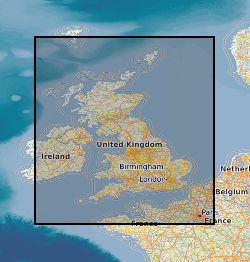
The Bedrock summary lithologies dataset is digital geological map across the bulk of the UK Continental Shelf (UKCS), for areas up to a water depth of 200m, which groups the bedrock lithologies (rock types) into classes based on similar engineering geology characteristics. The map is derived from the 1:250,000 scale digital bedrock map of the UKCS, called DiGRock250k, which is available separately from the BGS. The map was produced in 2014 in collaboration with, and co-funded by, The Crown Estate as part of a wider commissioned project to assess seabed geological constraints on engineering infrastructure across the UKCS. The divisions on the map combine the bedrock formations into 8 classes (with several subdivisions) of similar strength and lithological variability, each with a ‘Category’ title that summarises their main lithological character: Class1 – Igneous; Class 2 - Tertiary Sandstone and Limestone; Class 2.5 - Tertiary Sandstone and Limestone Interbedded; Class 3 - Tertiary Mudstone; Class 4 - Mesozoic Sandstone and Limestone; Class 4.5 - Mesozoic Sandstone and Limestone Interbedded; Class 5 - Mesozoic Mudstone; Class 6 – Chalk; Class 7 – Metamorphic; Class 8 - Palaeozoic Sedimentary. The data are held by the BGS as an ESRI ArcGIS Shapefile.
-
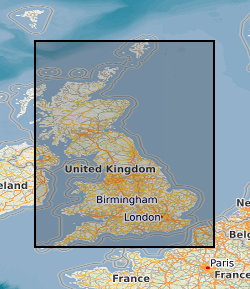
**This dataset has been superseded** The newGeoSure Insurance Product (newGIP) provides the potential insurance risk due to natural ground movement at a postcode level. It incorporates the combined effects of the 6 GeoSure hazards on (low-rise) buildings: landslides, shrink-swell clays, soluble rocks, running sands, compressible ground, and collapsible deposits. The newGeoSure Insurance Product evaluates these hazards using a series of processes including statistical analyses and expert elicitation techniques to create a derived product that can be used for insurance purposes such as identifying and estimating risk and susceptibility. The newGeoSure Insurance Product is updated biannually with new releases of Ordnance Survey Code-Point® data (current version used: 2016.3) and is provided for national coverage across Great Britain (not including the Isle of Man). This product is available in a range of GIS formats including Access (*.dbf), ArcGIS (*.shp), or MapInfo (*.tab). The newGeoSure Insurance Product is produced for use at 1:50 000 scale, providing 50 m ground resolution.
-
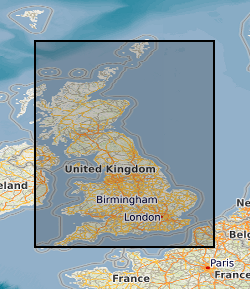
**This dataset has been superseded** The newGeoSure Insurance Product (newGIP) provides the potential insurance risk due to natural ground movement. It incorporates the combined effects of the 6 GeoSure hazards on (low-rise) buildings: landslides, shrink-swell clays, soluble rocks, running sands, compressible ground and collapsible deposits. These hazards are evaluated using a series of processes including statistical analyses and expert elicitation techniques to create a derived product that can be used for insurance purposes such as identifying and estimating risk and susceptibility. The evaluated hazards are then linked to a postcode database - the Derived Postcode Database (DPD), which is updated biannually with new releases of Ordnance Survey Code-Point® data (current version used: 2019.1). The newGIP is provided for national coverage across Great Britain (not including the Isle of Man). This product is available in a range of GIS formats including Access (*.dbf), ArcGIS (*.shp) or MapInfo (*.tab). The newGIP is produced for use at 1:50 000 scale providing 50 m ground resolution.
-
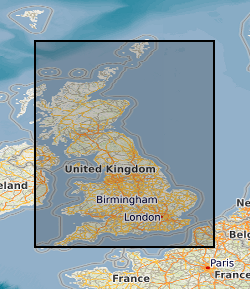
**This dataset has been superseded** The newGeoSure Insurance Product (newGIP) provides the potential insurance risk due to natural ground movement. It incorporates the combined effects of the 6 GeoSure hazards on (low-rise) buildings: landslides, shrink-swell clays, soluble rocks, running sands, compressible ground and collapsible deposits. These hazards are evaluated using a series of processes including statistical analyses and expert elicitation techniques to create a derived product that can be used for insurance purposes such as identifying and estimating risk and susceptibility. The evaluated hazards are then linked to a postcode database - the Derived Postcode Database (DPD), which is updated biannually with new releases of Ordnance Survey Code-Point® data (current version used: 2019.3). The newGIP is provided for national coverage across Great Britain (not including the Isle of Man). This product is available in a range of GIS formats including Access (*.dbf), ArcGIS (*.shp) or MapInfo (*.tab). The newGIP is produced for use at 1:50 000 scale providing 50 m ground resolution.
-
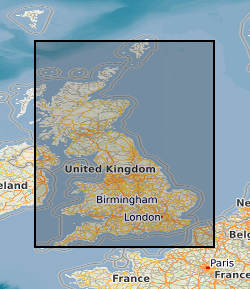
**This dataset has been superseded** The newGeoSure Insurance Product (newGIP) provides the potential insurance risk due to natural ground movement. It incorporates the combined effects of the 6 GeoSure hazards on (low-rise) buildings. This data is available as vector data, 25m gridded data or alternatively linked to a postcode database - the Derived Postcode Database. A series of GIS (Geographical Information System) maps show the most significant hazard areas. The ground movement, or subsidence, hazards included are landslides, shrink-swell clays, soluble rocks, running sands, compressible ground and collapsible deposits. The newGeoSure Insurance Product uses the individual GeoSure data layers and evaluates them using a series of processes including statistical analyses and expert elicitation techniques to create a derived product that can be used for insurance purposes such as identifying and estimating risk and susceptibility. The Derived Postcode Database (DPD) contains generalised information at a postcode level. The DPD is designed to provide a 'summary' value representing the combined effects of the GeoSure dataset across a postcode sector area. It is available as a GIS point dataset or a text (.txt) file format. The DPD contains a normalised hazard rating for each of the 6 GeoSure themes hazards (i.e. each GeoSure theme has been balanced against each other) and a combined unified hazard rating for each postcode in Great Britain. The combined hazard rating for each postcode is available as a standalone product. The Derived Postcode Database is available in a point data format or text file format. It is available in a range of GIS formats including ArcGIS (*.shp), ArcInfo Coverages and MapInfo (*.tab). More specialised formats may be available but may incur additional processing costs. The newGeoSure Insurance Product dataset has been created as vector data but is also available as a raster grid. This data is available in a range of GIS formats, including ArcGIS (*.shp), ArcInfo coverage's and MapInfo (*.tab). More specialised formats may be available but may incur additional processing costs. Data for the newGIP is provided for national coverage across Great Britain. The newGeoSure Insurance Product dataset is produced for use at 1:50 000 scale providing 50m ground resolution. This dataset has been specifically developed for the insurance of low-rise buildings. The GeoSure datasets have been developed to identify the potential hazard for low-rise buildings and those with shallow foundations of less than 2 m deep. The identification of ground instability and other geological hazards can assist regional planners; rapidly identifying areas with potential problems and aid local government offices in making development plans by helping to define land suited to different uses. Other users of these data may include developers, homeowners, solicitors, loss adjusters, the insurance industry, architects and surveyors.
-
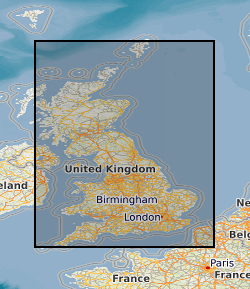
**This dataset has been superseded** The newGeoSure Insurance Product (newGIP) provides the potential insurance risk due to natural ground movement at a postcode level. It incorporates the combined effects of the 6 GeoSure hazards on (low-rise) buildings: landslides, shrink-swell clays, soluble rocks, running sands, compressible ground, and collapsible deposits. The newGeoSure Insurance Product evaluates these hazards using a series of processes including statistical analyses and expert elicitation techniques to create a derived product that can be used for insurance purposes such as identifying and estimating risk and susceptibility. The newGeoSure Insurance Product is updated biannually with new releases of Ordnance Survey Code-Point® data (current version used: 2017.1) and is provided for national coverage across Great Britain (not including the Isle of Man). This product is available in a range of GIS formats including Access (*.dbf), ArcGIS (*.shp), or MapInfo (*.tab). The newGeoSure Insurance Product is produced for use at 1:50 000 scale, providing 50 m ground resolution.
-
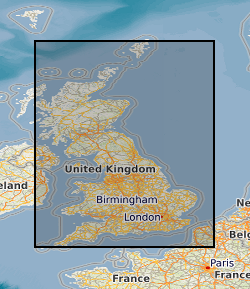
**This dataset has been superseded** The newGeoSure Insurance Product (newGIP) provides the potential insurance risk due to natural ground movement. It incorporates the combined effects of the 6 GeoSure hazards on (low-rise) buildings: landslides, shrink-swell clays, soluble rocks, running sands, compressible ground and collapsible deposits. These hazards are evaluated using a series of processes including statistical analyses and expert elicitation techniques to create a derived product that can be used for insurance purposes such as identifying and estimating risk and susceptibility. The evaluated hazards are then linked to a postcode database - the Derived Postcode Database (DPD), which is updated biannually with new releases of Ordnance Survey Code-Point® data (current version used: 2018.3). The newGIP is provided for national coverage across Great Britain (not including the Isle of Man). This product is available in a range of GIS formats including Access (*.dbf), ArcGIS (*.shp) or MapInfo (*.tab). The newGIP is produced for use at 1:50 000 scale providing 50 m ground resolution.
 NERC Data Catalogue Service
NERC Data Catalogue Service